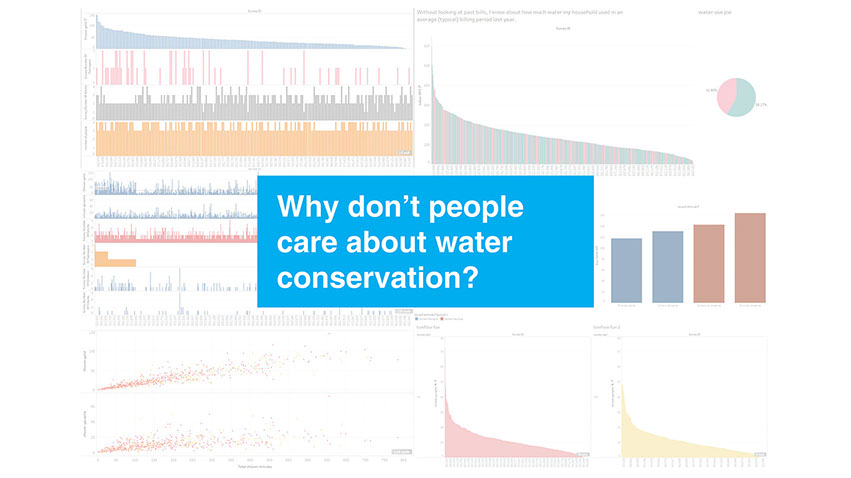
Intent
The intent of this project was to analyse, visualize and pull insights from self collected data along with the "Residential End Uses of Water 2016" dataset collected by Water Research Foundation (WRF) to identify design opportunities regarding residential water use.
AHMETBURAKAKTAS
about
work
contact
dark side
_
A data literacy / research project on shower habits
SHOWER-LESS
2016
_
Methodology
I started the project by logging my residential water use for 3 weeks. Then I visualized the data and identified some potential opportunities and defined a "hunt statement". The next step was to dive into the WRF dataset, where I saw a lot of overlaps around shower use. Therefore I refined my hunt statement around shower habits and dug deeper in the dataset to find patterns, correlations and contrasts.
Logging my water consumption for 3 weeks.
This is what the WRF dataset looks like:
I used the most water while showering and the amount of water I used showed great difference over time. I dug into the WRF dataset to see if other households have similar patterns and found out that shower was really the main source of water use on most of the houses.
My total shower use
In the below visualization it is easy to see that in these four different houses, shower use basically shapes the overall water use and it is highly variable, exactly what my own data showed.
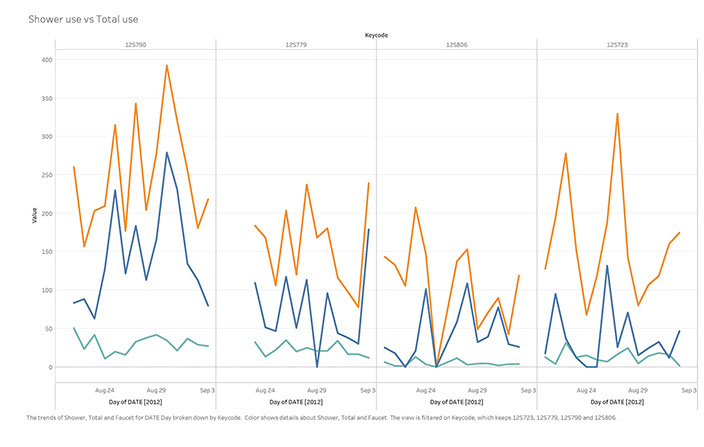
Total indoor water use (gallons per day)
Total shower use (gallons per day)
Total faucet use (gallons per day)
After seeing that showers have the most potential to make impact on, I focused only on shower data and tried to understand the users motivations and habits around water conservation during showers. I came up with this hunt statement to guide me through my research in the data.

After that I made an analytics blueprint to determine the specific dataset that have the potential to help me clarify insights.

Insights & Design Principles
I visualized the data using different types of charts, graphs and diagrams to finally create a story that shows my learnings and design principles and finally came up with a product-service system idea to demonstrate one of the possible design solutions to encourage domestic water conservation.
1- Give Tangible incentives
Survey results show that most people are aware of the money they spend for their water bill but nearly half of them are not aware
of their amount of water use. Bill is tangible, water is not. How might we make it more tangible?

2- Focus on Teenagers
Teenagers have a strong correlation with high shower use. Reducing their water consumption will have a dramatic effect on overall water conservation.
Shower use (Gal. per house per day)
Number of Teenagers at house
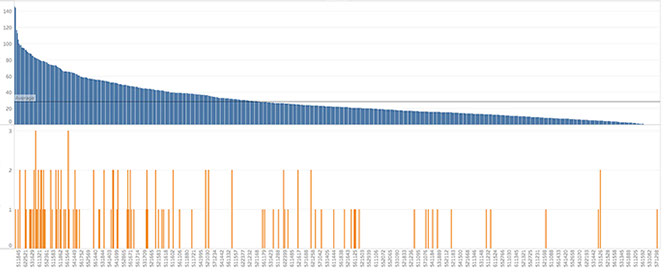
House ID number
3- Communicate Fluently
Although survey results show that majority of the users want rebates and financial incentives, most of them are not aware of the rebates offered by their water utility.
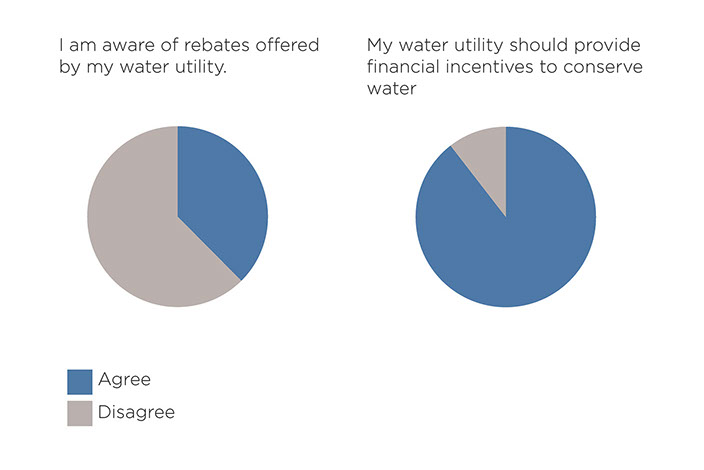
4- Focus on behavior, not hardware
As seen on the scatter plot, water saving low flow shower heads do not have a strong effect on water conservation level since if there were a strong effect, we would see yellow dots leaning bottom right. Therefore aiming to change the behavior of the users to decrease the shower duration is more valuable.
Shower use (Gallons)

Shower use (Minutes)
Do you use low-flow shower heads?
YES
NO

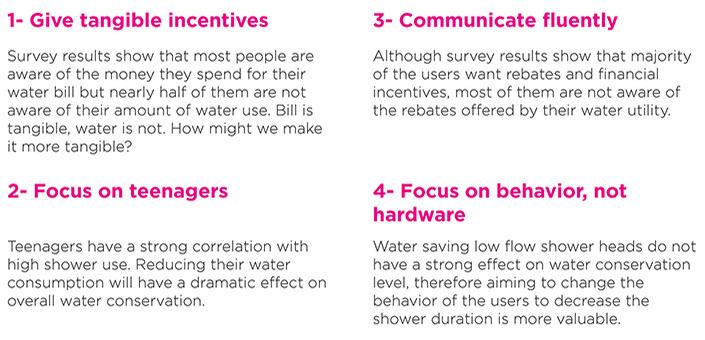
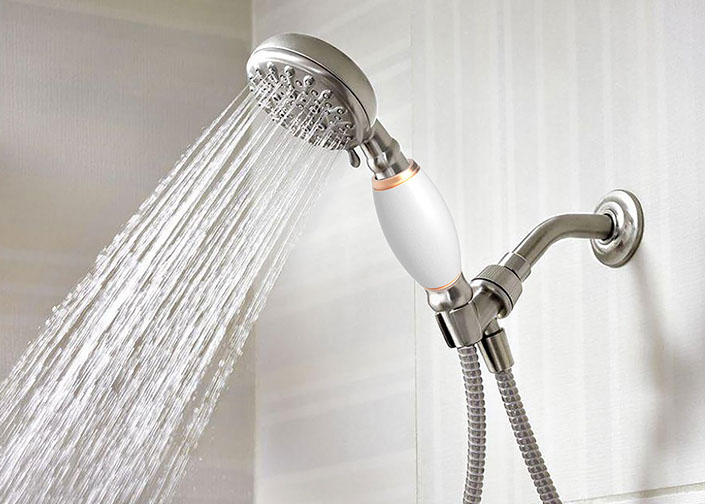
Shower-less
A connected device that aims to encourage behavior change via gamifying the act of water conservation in shower and offering tangible and user specific incentives.

You will conserve more than your peers if you finish now.
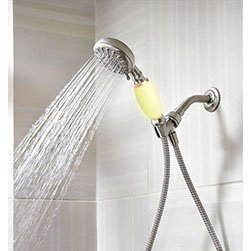
You are about average

This shower is taking too long. It is likely you will loose rank.

Using basic principles of behavioral economics, the service will give the users a starting 150 points and they will try to keep their points high throughout the month. At the end, the top %10 users that saved the most water - got the most points - will get a reward that will attract teenagers. This service then can be scaled up with different rewards to attract different customer segments. The service consists of different business stakeholders and the model relies on advertisement in exchange of free services like concert tickets. Here is a value web of the service system:
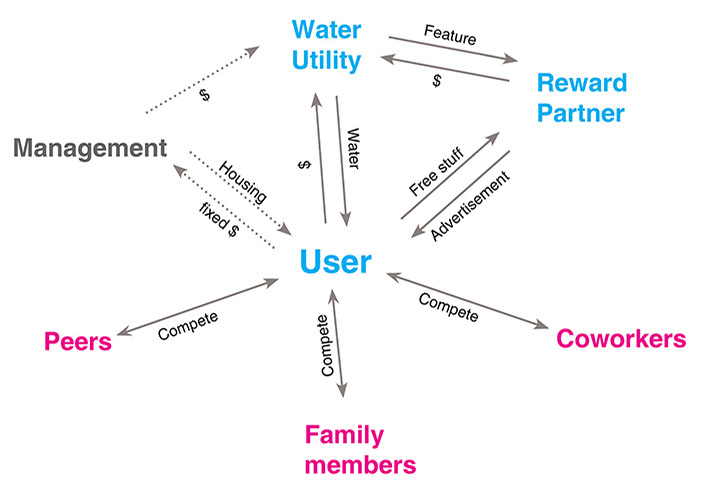
© 2017 Ahmet Burak Aktas